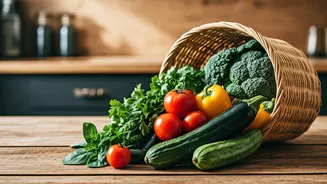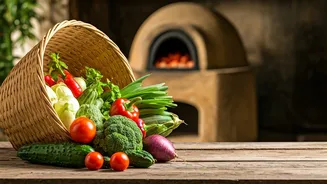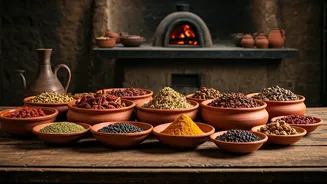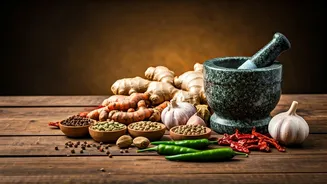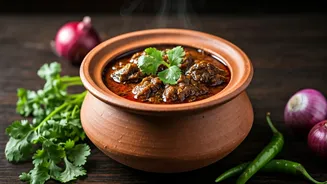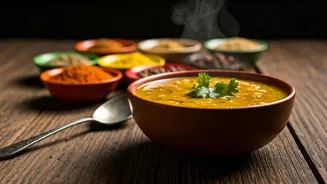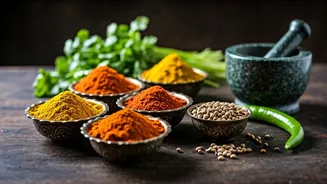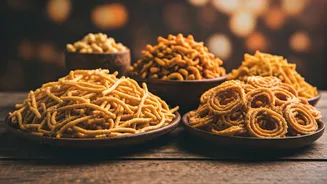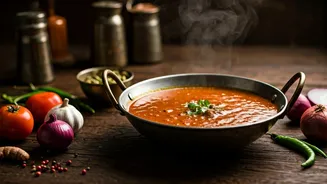Embrace Natural Ingredients
Tribal kitchens in India prioritize fresh, locally sourced ingredients. They skillfully utilize seasonal produce, herbs, and spices found in their surroundings.
These communities often cultivate their own gardens, ensuring a steady supply of ingredients, and reducing reliance on external sources. The use of natural ingredients is at the heart of their cuisine, offering both nutritional benefits and unique flavors. The focus on fresh ingredients also minimizes the use of processed foods, aligning with traditional health practices. Furthermore, this approach supports sustainable agriculture and reduces environmental impact, demonstrating a deep respect for nature.
Master Simple Cooking Methods
Simplicity defines the cooking methods in tribal kitchens. Traditional techniques like open-fire cooking, steaming, and slow simmering are common. These methods preserve the natural flavors and nutritional value of the ingredients. The lack of elaborate equipment reflects their resourcefulness and adaptability. Cooking in earthenware pots, wrapping food in leaves, and using bamboo shoots for cooking are examples of their unique approaches. These simple methods not only highlight their ingenuity but also contribute to a slower, more mindful approach to food preparation, enhancing the dining experience and connection to their culinary heritage.
Explore Diverse Spices
Indian tribal cuisines showcase a vibrant array of spices. Each community utilizes unique spice blends, often adapted to local ingredients. Turmeric, ginger, chili peppers, and various local herbs are central to their dishes. These spices enhance flavors and provide numerous health benefits. The use of spices reflects their understanding of both culinary and medicinal properties. These spice blends not only define the taste profile of tribal food but also contribute to the preservation of cultural practices. Each tribal region has a unique spice palette, offering a diverse culinary experience.
Value Sustainable Practices
Sustainability is deeply embedded in the tribal approach to food. Their cooking methods and ingredient choices reflect this commitment to environmental harmony. Tribal communities often practice foraging, harvesting only what they need, and minimizing waste. Using every part of a plant and preserving food through natural methods such as drying or fermentation highlights their dedication to conservation. This approach shows a deep respect for the environment and promotes responsible consumption. By valuing sustainable practices, tribal kitchens provide a model for mindful cooking and a connection to the environment, emphasizing the importance of resource management and ecological awareness.
Appreciate Community Eating
Food in tribal cultures serves a critical social function. Meals often involve communal eating, promoting togetherness and reinforcing community bonds. Cooking and sharing food becomes a shared experience, strengthening social ties. This emphasis on community dining fosters a sense of belonging and mutual support. Family and friends come together to prepare and share meals, creating a supportive network. The ritual of sharing food symbolizes cooperation, unity, and respect for others, and encourages conversations around the table. The emphasis on community underscores the cultural value of relationships and collective experiences.
Understand Nutritional Balance
Tribal diets often show a strong understanding of nutritional balance. Their food choices naturally provide balanced meals with a combination of carbohydrates, proteins, and fats. Diets commonly include whole grains, locally grown vegetables, and protein sources such as fish, and meat. These diets support the communities' physical activity levels. Tribal cuisine prioritizes nutrient-dense foods, which are rich in vitamins, minerals, and antioxidants. The traditional dishes often avoid refined sugars and processed foods, focusing on natural ingredients that support overall health. This approach indicates an awareness of dietary needs and the importance of nourishing the body with wholesome ingredients.
Cherish Ancient Recipes
Tribal kitchens are the keepers of ancient culinary wisdom, preserving age-old recipes and cooking traditions. Recipes are usually handed down from generation to generation. These recipes tell stories of the communities' history and cultural heritage. The dishes reflect local traditions, celebrating seasonal ingredients and cultural practices. The preservation of these recipes plays a key role in maintaining cultural identity and sharing culinary heritage. Each dish represents a piece of cultural history, offering a tangible link to the past. By cherishing these recipes, tribal communities maintain their unique identity and celebrate their culinary traditions for the future.


